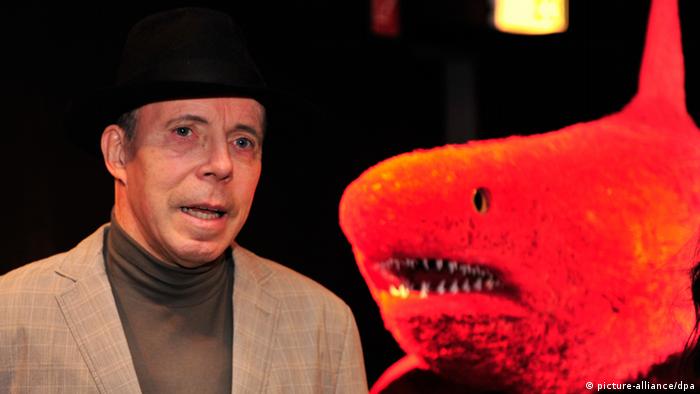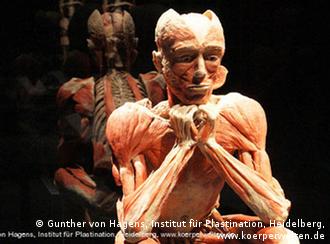“新一代iPhone的機殼好像要使用金屬玻璃”,2012年春季前後,這樣的傳聞在網上四處傳播。這Liquidmetal(由液態與金屬兩屬字所複合) 與 Vitreloy 是一系列由加州理工學院研究團隊所開發出來的非晶態金屬合金的商業名稱,目前由該團隊所組織的液態金屬科技公司(Liquidmetal Technologies Inc.[1])進行行銷,並是公司的產品名稱與商標名稱。
雖然名稱中包含液態,但在常溫下其實並不是液態,而是非結晶的固態(又稱無定形體),類似玻璃,這樣的物質也被稱為金屬玻璃。
特性
「液態金屬」這種合金內含數種原子,這些原子的大小具有顯著差異,形成一種低自由空間的緊密混合物。 這一物質不像結晶物質那樣在明顯的熔點下由固態突然轉為液態,反而更像是玻璃:隨著溫度的升高,黏滯度會逐漸降低。 由於在較高溫時具有可塑性,因此在使用模具進行成型時,可以易於控制它的機構特性。 這一黏滯性也防止原子產生足夠的移動而構成有秩序的晶格[2],因此在加熱成型與冷卻之後,仍然能保持非結晶的狀態。
用途
Liquidmetal 結合了多種在一般金屬中所沒有的特性,因此有廣泛的應用。
第一個商業用途是製作高爾夫球所用球杆的桿頭,
一個知名的用途是蘋果公司在美國所發售的iPhone 3G 中所附的 SIM 卡取卡工具是使用 liquidmetal 所製,被認為是該公司對這一金屬材料的使用可行性上的操練。[3]
一傳聞的依據是,該公司擁有的幾項機殼制造專利中都有金屬玻璃的相關描述,而且,該公司還與美國制造銷售金屬玻璃的廠商Liquidmetal Technology合作……
From Wikipedia, the free encyclopedia
Liquidmetal and
Vitreloy are commercial names of a series of
amorphous metal alloys developed by a
California Institute of Technology (Caltech) research team and marketed by
Liquidmetal Technologies. Liquidmetal alloys combine a number of desirable material features, including high
tensile strength, excellent
corrosion resistance, very high
coefficient of restitution and excellent anti-wearing characteristics, while also being able to be heat-formed in processes similar to
thermoplastics. Despite the name, they are not liquid at room temperature.
[1]
Liquidmetal was introduced for commercial applications in 2003.
[citation needed] It is used for, among other things,
golf clubs,
watches and covers of
cell phones.
The alloy was the end result of a research program into amorphous
metals carried out at Caltech. It was the first of a series of
experimental alloys that could achieve an amorphous structure at
relatively slow cooling rates.
[citation needed]
Amorphous metals had been made before, but only in small batches
because cooling rates needed to be in the millions of degrees per
second. For example, amorphous wires could be fabricated by splat
cooling a stream of molten metal on a spinning disk. Because Vitreloy
allowed such slow cooling rates, production of larger batch sizes was
possible. More recently, a number of additional alloys have been added
to the Liquidmetal portfolio. These alloys also retain their amorphous
structure after repeated re-heating, allowing them to be used in a wide
variety of traditional machining processes.
Characteristics
Liquidmetal alloys contain atoms of significantly different sizes.
They form a dense mix with low free volume. Unlike crystalline metals,
there is no obvious melting point at which viscosity drops suddenly.
Vitreloy behaves more like other
glasses,
in that its viscosity drops gradually with increased temperature. At
high temperature, it behaves in a plastic manner, allowing the
mechanical properties to be controlled relatively easily during casting.
The viscosity prevents the atoms moving enough to form an ordered
lattice, so the material retains its amorphous properties even after
being heat-formed.
The alloys have relatively low softening temperatures, allowing
casting of complicated shapes without need of finishing. The material
properties immediately after casting are much better than of
conventional metals; usually, cast metals have worse properties than
forged or wrought ones. The alloys are also malleable at low
temperatures (400 °C/752 °F for the earliest formulation), and can be
molded.
The low free volume also results in low shrinkage during cooling. For
all of these reasons, Liquidmetal can be formed into complex shapes
using processes similar to thermoplastics,
[2] which makes Liquidmetal a potential replacement for many applications where plastics would normally be used.
Due to their non-crystalline (
amorphous) structures, Liquidmetals are harder than alloys of
titanium or
aluminum of similar composition. The zirconium and titanium based Liquidmetal alloys achieved
yield strength
of over 1723 MPa, nearly twice the strength of conventional crystalline
titanium alloys (Ti6Al4V is ~830 MPa), and about the strength of
high-strength steels and some highly engineered bulk
composite materials (see
tensile strength
for a list of common materials). However, the early casting methods
introduced microscopic flaws that were excellent sites for crack
propagation, and led to Vitreloy being fragile, like glass. Although
strong, these early batches could easily be shattered if struck. Newer
casting methods, adjustment to the alloy mixtures and other changes have
improved this.
The lack of grain boundaries may contribute to the high coefficient
of restitution (close to 1) these alloys exhibit. In a demonstration,
ball bearings dropped on plates of metal will bounce three times as long on Liquidmetal.
[3]
The lack of grain boundaries in a metallic glass eliminates
grain-boundary corrosion — a common problem in high-strength alloys
produced by precipitation hardening and sensitized stainless steels.
Liquidmetal alloys are therefore generally more corrosion resistant,
both due to the mechanical structure as well as the elements used in its
alloy. The combination of mechanical hardness, high elasticity and
corrosion resistance makes Liquidmetal wear resistant.
Although at high temperatures,
plastic deformation occurs easily, almost none occurs at room temperature before the onset of
catastrophic failure.
This limits the material's applicability in reliability-critical
applications, as the impending failure is not evident. The material is
also susceptible to metal fatigue with crack growth; a two-phase
composite structure with amorphous matrix and a ductile dendritic
crystalline-phase reinforcement, or a
metal matrix composite reinforced with fibers of other material can reduce or eliminate this disadvantage.
[4]
Uses
Liquidmetal combines a number of features that are normally not found
in any one material. This makes them useful in a wide variety of
applications.
One of the first commercial uses of Liquidmetal was in golf clubs
made by the company, where the highly elastic metal was used in portions
of the face of the club.
[5]
These were highly rated by users, but the product was later dropped, in
part because the prototypes shattered after fewer than 40 hits.
[6] Since then, Liquidmetal has appeared in other sports equipment, including the cores of
golf balls,
skis,
baseball and
softball bats, and
tennis racquets.
[7]
The ability to be cast and molded, combined with high
wear resistance, has also led to Liquidmetal being used as a replacement for
plastics in some applications.
[citation needed] It has been used on the casing of late-model
SanDisk "Cruzer Titanium"
USB flash drives as well as their
Sansa line of
flash-based
MP3 player, and casings of some
mobile phones, like the luxury
Vertu products, and other toughened consumer electronics.
[citation needed] Liquidmetal has also notably been used for making the SIM ejector tool of some
iPhone 3Gs made by
Apple Inc., shipped in the US. This was done by Apple as an exercise to test the viability of usage of the metal.
[8]
They retain a scratch-free surface longer than competing materials,
while still being made in complex shapes. The same qualities lend it to
be used as protective coatings for industrial machinery, including
petroleum drill pipes and
power plant boiler tubes.
[citation needed]
It is also considered as a replacement of titanium in applications
ranging from medical instruments and cars to military and aerospace
industry. In military applications, rods of amorphous metals are
considered as a replacement of
depleted uranium in
kinetic energy penetrators.
[9] Plates of Liquidmetal were used in the
solar wind ion collector array in the
Genesis space probe.
[citation needed]
Although Liquidmetal has very high strength and an excellent
strength to weight ratio, its commercial success as a structural material may be limited.
[citation needed]
Work continues on amorphous iron-based alloys that would combine at
least some of the advantages of Liquidmetal with even greater strength,
estimated to be two to three times the strength of the best steels made
today. This would give such an alloy a strength to weight ratio that
would easily beat the best lightweight materials such as
aluminium or titanium, and be much less expensive than composite materials.
[citation needed]


 Body Worlds uses bodies from donors
Body Worlds uses bodies from donors
